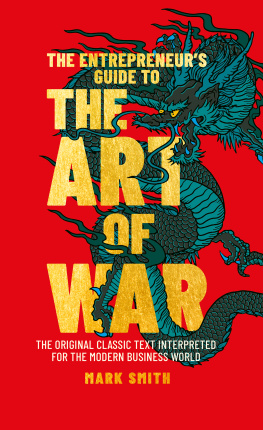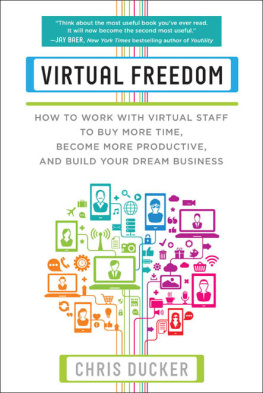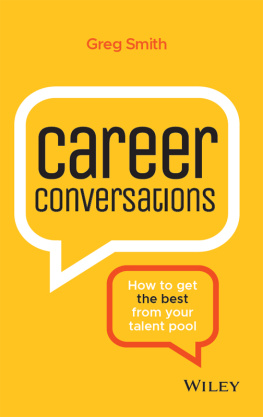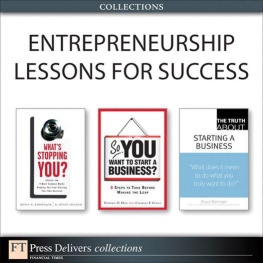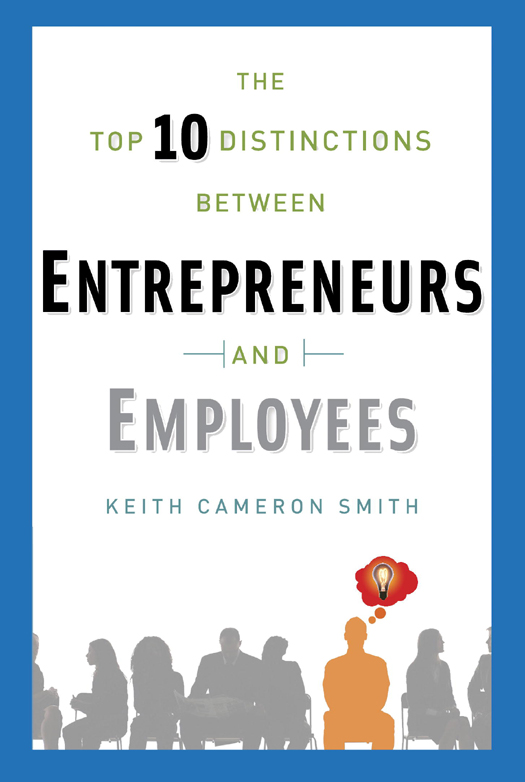Copyright 2012 by Keith Cameron Smith
All rights reserved.
Published in the United States by Ballantine Books, an imprint of The Random House Publishing Group, a division of Random House, Inc., New York.
B ALLANTINE and colophon are registered trademarks of Random House, Inc.
Library of Congress Cataloging-in-Publication Data Smith, Keith Cameron.
The top 10 distinctions between entrepreneurs and employees / Keith Cameron Smith.
p. cm.
eISBN: 978-0-345-53551-1
1. Entrepreneurship. 2. Employees. 3. Success in business. I. Title. II Title: Top ten distinctions between entrepreneurs and employees.
HB615.S65 2012
658.421dc23
2012021299
www.ballantinebooks.com
Title-page photographs: Masterfile Royalty Free (people), Photodisc (light bulb)
Jacket design: Mary Ann Smith
Jacket images: Masterfile Royalty Free (people),
Photodisc/Getty Images (lightbulb)
v3.1
Foreword
BY SHARON LECHTER
W hen it comes to money, I have found that the most important difference between the rich and the poor is found in their mindsets. In fact, I would say that your mindset may be more important than your bank account as a measure of your financial future. A rich person with a poor mindset will most likely lose his or her wealth. In contrast, many people who are wealthy today started out very poor, with nothing in material wealth, but they had the desire to become rich and trained themselves to have a rich mindset. With a rich mindset, they know that even if they have financial setbacks they can and will regain their wealth. They understand the importance of entrepreneurship.
You are holding a book that can give you a considerable advantage in your journey to becoming a successful entrepreneur. The ideas that Keith presents here are powerful and practical. He shares some fresh insights and perspectives from his own life experiences that are congruent with the messages that I have been teaching throughout my life.
It was Napoleon Hill, author of Think and Grow Rich, who said, Whatever the mind can conceive and believe, it can achieve. Man, alone, has the power to transform his thoughts into physical reality; man, alone, can dream and make his dreams come true. But Hill also knew that this power of the mind is strengthened best by learning from adversity and overcoming fear. I have had the honor to work with the Napoleon Hill Foundation in my latest books, Three Feet from Gold and Outwitting the Devil, both of which share how to discover your own Personal Success Equation, turn your fear into faith, and achieve the success you deserve.
In this book, Keith highlights and specifically addresses the differences in mindset that allow an entrepreneur to create success, both financially and personally. Whether you are an aspiring entrepreneur or already have a thriving business, these distinctions will help you create success and fulfillment on your journey. If you are an employee, these distinctions can help you to think and act more like an entrepreneur and become more valuable to your company. You will also benefit from Keiths distinctions on powerful ways to work with people. Successful entrepreneurs understand that all business is about people and learning how to relate and communicate well with people is a very necessary skill to develop.
These distinctions may offer you an advantage in your professional life, and may also reveal great ideas on how to improve your personal life. A true entrepreneur adds value to the world and in doing so creates a successful business. Along the way this same entrepreneur will find equal or greater rewards in his or her personal life. The distinctions in this book will empower you to improve every area of your life.
Keith has a gift in being able to connect and communicate with people in ways that inspire them to believe in themselves and encourage them to take action. As you read this book you will experience that gift. We hope it will give you a clearer vision for your own life and a better understanding of how to achieve the success and freedom you deserve.
May you be blessed with success,
Sharon Lechter
Along with being a bestselling author, S HARON L ECHTER is a CPA, entrepreneur, international speaker, and proud mother and grandmother. She is also a national spokesperson for the AICPA for financial literacy and was a member of the first Presidents Advisory Council on Financial Literacy and founder of Pay Your Family First. Her latest books released in cooperation with the Napoleon Hill Foundation include Three Feet from Gold and Outwitting the Devil. Also available is her award-winning, money-and-life reality-based board game, ThriveTime for Teens. She is also the co-author of the international bestselling book Rich Dad, Poor Dad.
Preface
S ince writing The Top 10 Distinctions Between Millionaires and the Middle Class, I have continued to learn some valuable lessons about business and life. So I wrote this book because I wanted to share some of the fresh insights and perspectives I have gained over the last few years. This book reveals more personal stories of my successes and failures that have not been in my previous books.
I have been an entrepreneur for the last two decades and have experienced some great successes. I have also had some experiences that seemed like terrible failures at the time, but the lessons I learned from these failures transformed them into successes, and led me to more success. The lessons you can learn from your own failures are extremely valuable. As long as you are willing to embrace your experiences by taking full responsibility for them, your mistakes and failures will become some of the most powerfully enlightening experiences of your life.
The knowledge you have gained from your own past is the power you need to create your future. However, you will not learn from your past failures if you blame others for or complain about them, or try to justify why you didnt succeed. In order to become a successful entrepreneur you must keep moving forward toward the future you desire. Blaming, complaining, and attempting to justify keep you stuck in the past. One of the distinctions in this book includes a personal story of the largest business failure I have ever experienced and the important lessons I learned from it. I share it because I believe that if you want to impress someone you tell them of your successes, but if you want to impact someone you tell them of your failures. I wrote this book because I want to impact you.
There are three other reasons why I wrote this book and am now developing this series: responsibility, purpose, and legacy. I believe we all have a responsibility to share those things that produce positive results in our lives. I experience a strong sense of purpose each time I teach these distinctions at various venues around the world. And I see these books as part of my legacy, especially to my own children. Some of my favorite books are more than one hundred years old. Its fascinating to think that someone may be reading, enjoying, and benefiting from this book a hundred years from now. I strongly believe that these distinctions between entrepreneurs and employees are timeless. They are just as relevant today as they were one hundred years ago and will be just as relevant one hundred years from now. Read, enjoy, and benefit from these distinctions. You can become a successful entrepreneur.



